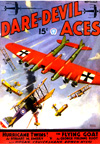“Sky Fighters, July 1937″ by Eugene M. Frandzen
Eugene M. Frandzen painted the covers of Sky Fighters from its first issue in 1932 until he moved on from the pulps in 1939. At this point in the run, the covers were about the planes featured on the cover more than the story depicted. On the July 1937 cover, It’s the Sopwith Dolphin!
The Ships on the Cover
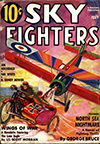 WITH four guns up front capable of shooting at two angles, the Sopwith Dolphin was an opponent to keep from in front of! Its stubby businesslike nose and short fuselage gave it the appearance of a heavily-weighted projectile racing through the air. Built in a distinctly unorthodox design, at first glance, it seemed to be something made to crawl on the ground which had suddenly sprouted wings, but once in the air it could twist and squirm in and out of maneuvers with such rapidity that it made one “OH†and “AH†with high-pressure exultation.
WITH four guns up front capable of shooting at two angles, the Sopwith Dolphin was an opponent to keep from in front of! Its stubby businesslike nose and short fuselage gave it the appearance of a heavily-weighted projectile racing through the air. Built in a distinctly unorthodox design, at first glance, it seemed to be something made to crawl on the ground which had suddenly sprouted wings, but once in the air it could twist and squirm in and out of maneuvers with such rapidity that it made one “OH†and “AH†with high-pressure exultation.
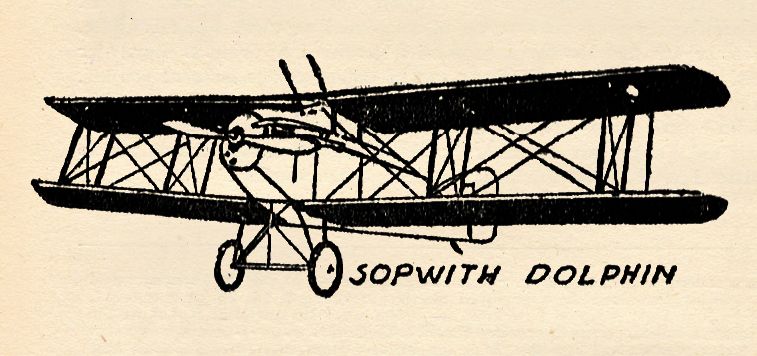
Of course Mr. T.O.M. Sopwith, the versatile designer of a dozen of more airplanes, most of which had quite similar wing construction as to dihedral, was probably sick of the same old thing over and over. So he deliberately pulled a fast one at the designing table. After the bugs were chased out of the experimental model it was found that this radically different job of stick and wire had clicked beyond the designer and manufacturer’s wildest hopes. It went into production and started rolling off the line.
Hitherto Sopwith had stuck to rotary motors, mostly Clergets, but in the Dolphin a 200 h.p. Hispano-Suiza was installed in the nose. The nose was now streamlined, which gave it a radically different appearance from former Sopwiths with their round cowling ring to fit around the whirling rotaries. Of course the heavier, more powerful motor was necessary because the Dolphin was a heavier and larger ship than the famous Camel. The speed of these two was about the same, the Dolphin having only about six or seven miles advantage of the Camel.
The Gun Arrangement
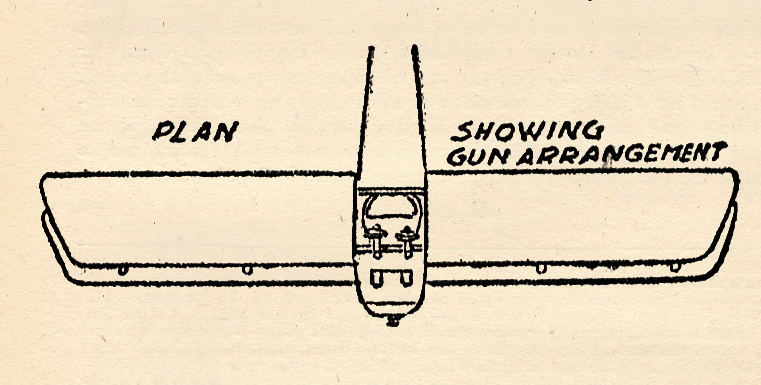
The two Lewis guns sticking up at a 45-degree angle were primarily for blasting the underside of an enemy plane, as the front guns were reserved to deliver a barrage of fire through the prop at any instant. This arrangement of guns made a hit with most pilots and some of them in 1918 made a practice of harassing German troops in their trenches and on roads by diving on them and having two separate angles of fire with which to mow down their opponents.
Later in the war the Sopwith Salamander, a single-seater with a rotary motor and armored belly and sides, came out just for such infantry strafing. Perhaps it was the occasional strafing of trenches with the Dolphin, and the many holes which appeared in its underside, and the wounds and casualties of the daring Dolphin pilots, that inspired this later Salamander.
Picking Up an Espionage Man
On the cover the Dolphin has taken on another trick job, that of picking up one of the Allied espionage men from behind the enemy lines. Usually a rendezvous was decided upon and the Allied plane sat down at this spot. If all went well the agent climbed aboard and was whisked out of danger quickly, but plenty of times valuable information was lost along with pilot and plane.
To most men the sense of balance and timing are fickle tilings of which they know little, and in which they lack experience and confidence. Not so with the agent catching the dangling rope from the swaying low-flying Dolphin. That man’s life had been spent dangling from ropes and scaffolds at dizzy heights. He had been foreman of a gang of bridge painters who year after year dangle from ropes and flimsy scaffolds high over the East River in New York Harbor. A rope overhead, a body of water underneath, a sure death if he slipped, was what he considered just another job of work-one that had been done before and one he was sure he could do at any time again when the emergency arose.
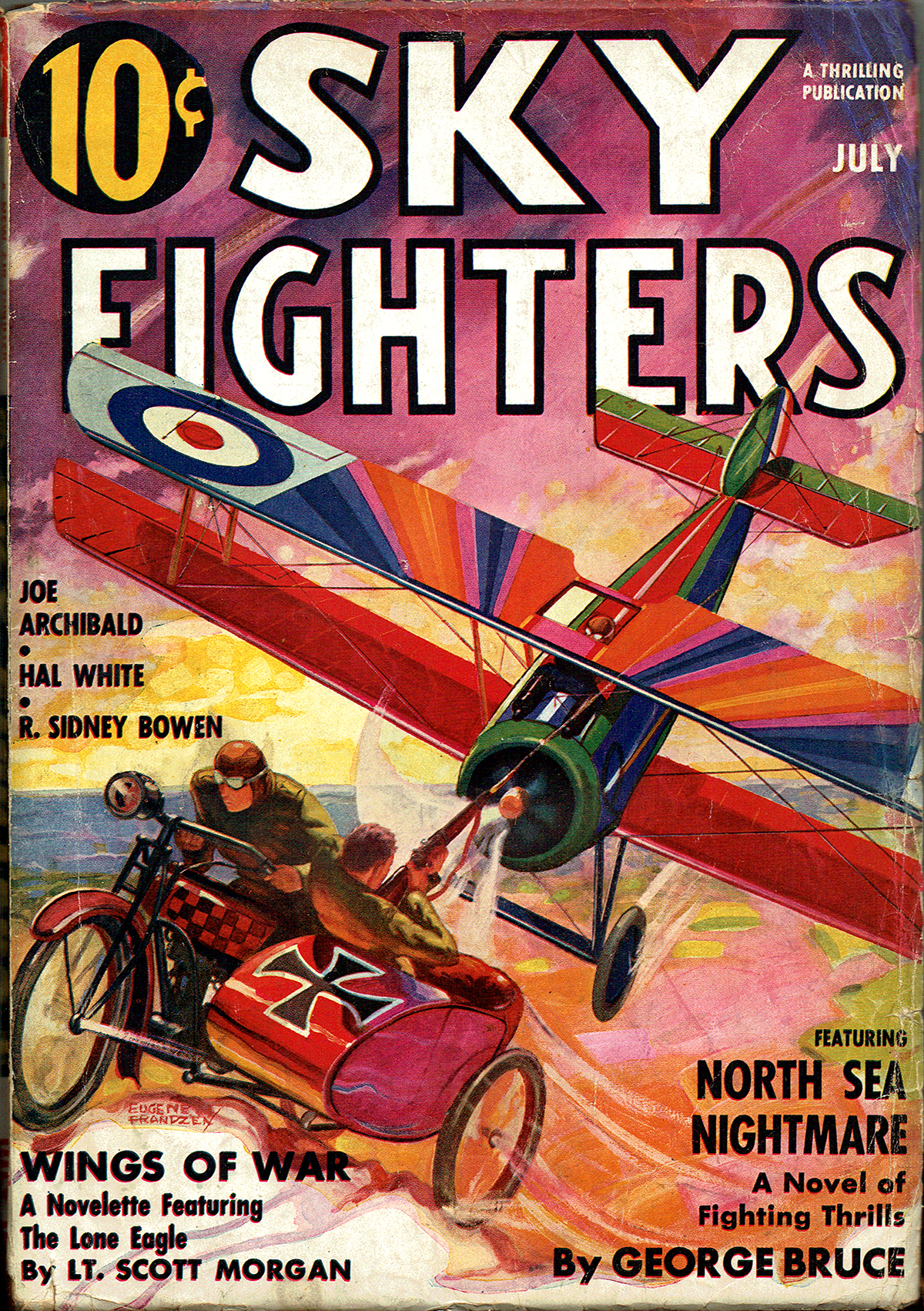
Sky Fighters, July 1937 by Eugene M. Frandzen
(The Ships on The Cover Page)





